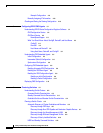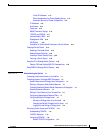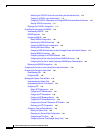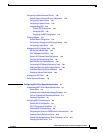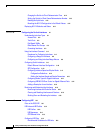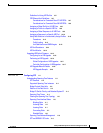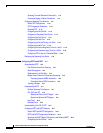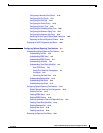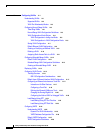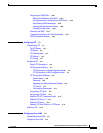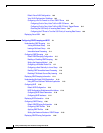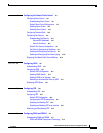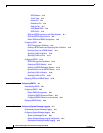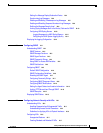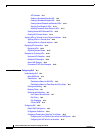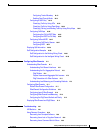
Contents
xiv
Catalyst 2950 Desktop Switch Software Configuration Guide
78-14982-01
CHAPTER
14 Configuring VLANs 14-1
Understanding VLANs 14-1
Supported VLANs 14-2
VLAN Port Membership Modes 14-3
Configuring Normal-Range VLANs 14-4
Token Ring VLANs 14-5
Normal-Range VLAN Configuration Guidelines 14-5
VLAN Configuration Mode Options 14-6
VLAN Configuration in config-vlan Mode 14-6
VLAN Configuration in VLAN Configuration Mode 14-6
Saving VLAN Configuration 14-7
Default Ethernet VLAN Configuration 14-8
Creating or Modifying an Ethernet VLAN 14-8
Deleting a VLAN 14-10
Assigning Static-Access Ports to a VLAN 14-11
Configuring Extended-Range VLANs 14-12
Default VLAN Configuration 14-12
Extended-Range VLAN Configuration Guidelines 14-12
Creating an Extended-Range VLAN 14-13
Displaying VLANs 14-14
Configuring VLAN Trunks 14-15
Trunking Overview 14-15
802.1Q Configuration Considerations 14-16
Default Layer 2 Ethernet Interface VLAN Configuration 14-17
Configuring an Ethernet Interface as a Trunk Port 14-17
Interaction with Other Features 14-17
Configuring a Trunk Port 14-18
Defining the Allowed VLANs on a Trunk 14-19
Changing the Pruning-Eligible List 14-20
Configuring the Native VLAN for Untagged Traffic 14-20
Load Sharing Using STP 14-21
Load Sharing Using STP Port Priorities 14-21
Load Sharing Using STP Path Cost 14-23
Configuring VMPS 14-24
Understanding VMPS 14-25
Dynamic Port VLAN Membership 14-25
VMPS Database Configuration File 14-26
Default VMPS Configuration 14-27
VMPS Configuration Guidelines 14-28



